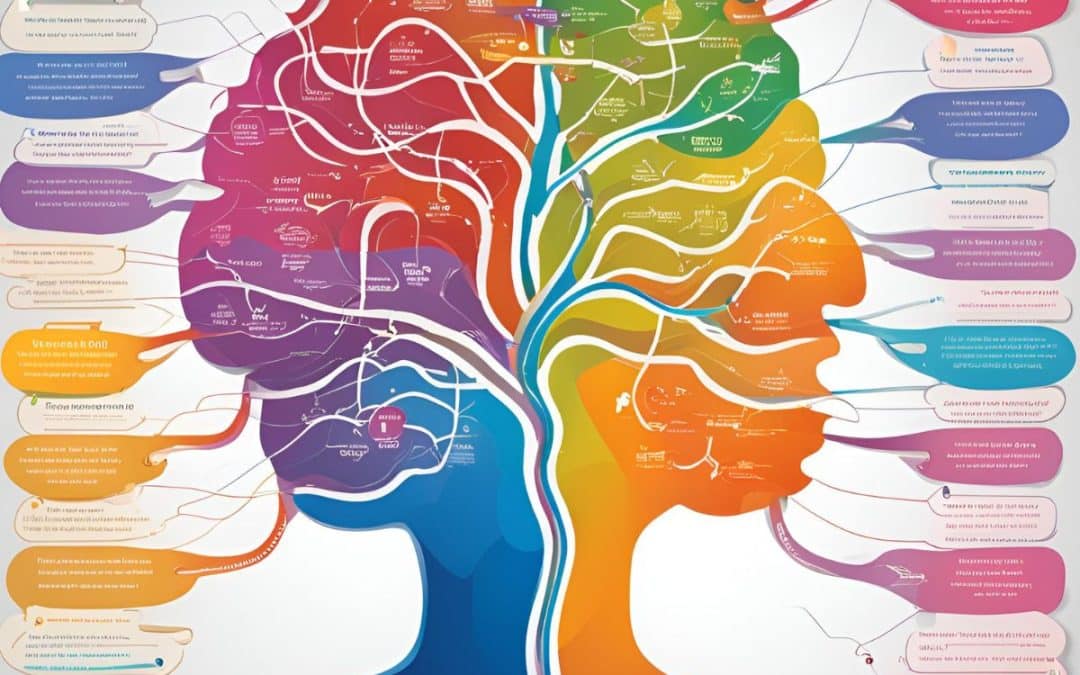I’m often asked by parents what the best mind maps for dyslexia are. As with all software, it’s a personal choice. Some programs will have functionality that is better suited for your child’s needs than others. This is why I’ve compiled a list of the ones we have tried and prefer.
What are mind maps?
Before we get onto the list, it’s important to understand what mind maps are and how they help kids (and adults) with dyslexia. A mind map is essentially a visual representation of ideas, concepts, or information. It starts with a central concept, often placed in the center of the page, with related ideas branching out like the spokes of a wheel. These branches can then further divide into sub-branches, creating a hierarchical structure that visually organizes information.
They use colors, images, and keywords to capture and connect ideas. Due to the fact that they are non-linear, they encourage a more flexible thinking compared to traditional note-taking methods. This flexibility is particularly beneficial for dyslexic learners, who often find it easier to process visual information than text-heavy content.
Click here to find more must-have resources for dyslexia
How mind maps help dyslexic learners?
Enhance visual learning
As I mentioned above, kids with dyslexia often have strong visual processing abilities. Mind maps play to this strength by turning information into a visual format. The use of colors, images, and spatial arrangement help to make complex ideas more accessible. For example, instead of writing a long, complex paragraph, a mind map will summarize key points in a way that’s easy to grasp at a glance. They break information down into manageable chunks, reducing cognitive overload. By focusing on keywords and shorter phrases, information is easier to absorb and recall.
Facilitate organization and structure
Organizing thoughts can be difficult for dyslexic learners, especially when trying to outline an essay or plan a project. Mind maps provide a clear structure, showing how ideas are related and where they fit within a larger framework. This visual organization can help dyslexic learners see the big picture and understand the connections between different concepts.
Support memory and recall
Dyslexia often affects short-term memory, making it difficult to retain information. Mind maps help with memory by creating strong visual associations. The combination of colors, images, and spatial layout creates a mental “map” that’s easier to remember than a list of disconnected facts. Additionally, the process of creating a mind map – actively choosing keywords, drawing branches, and adding images – reinforces the material and aids retention.
Encourage creativity and engagement
Traditional learning methods can sometimes feel rigid and uninspiring, particularly for dyslexic learners who may struggle with text-heavy content. Mind maps offer a more creative and engaging way to work with information. They allow for free-form thinking and the exploration of ideas without the constraints of linear notes. This can boost motivation and make learning more enjoyable.
Improve focus and attention
For dyslexic learners who struggle with attention and focus, mind maps can be a game-changer. The visual nature of mind maps helps maintain attention by breaking information into bite-sized pieces and making it more engaging. The act of drawing a mind map also requires active participation, which can help sustain focus and concentration.
Practical tips for using mind maps for dyslexia
- Start Simple. Begin with a central idea and create a few main branches. As you become more comfortable, you can add more details and complexity.
- Use Colors and Images. Incorporate different colors for different branches and add images or symbols to represent key concepts.
- Keep it Flexible. There’s no “right” way to create a mind map. Experiment with different layouts, styles, and formats.
- Review Regularly. Use your mind map as a study tool by reviewing it regularly. This helps reinforce the material and strengthen memory.
Onto the list… Below are the best mind maps for dyslexia – that we’ve tried and tested and recommend.
MindManager. With a dedicated student/education section, I cannot rate MindManager enough. Make use of the specially designed features to help take notes, create plans, organize thoughts and structure work. Click here for more details.
MindMeister. Boasts a huge range of customizable options within their expertly designed themes. Users can share and create maps together in real time and integrate the maps with a number of software programs to aid with learning.
Coggle. A web-based mind mapping tool that offers free accounts. You can create and download mind maps in PDF or image formats.
MindMup. A free online mind mapping tool with options to save your maps to Google Drive or download them as PDFs or images.
If you would like more information on how to support your child at school, click here for my dyslexia in the classroom feature.


Recent Comments